The traveling exhibition presenting the "Kings, Saints, Monasteries" project of the HUN-REN Research Centre for the Humanities arrived in Pannonhalma on February 14, 2025.
The exhibition offers a glimpse into the early periods of the Benedictine monasteries of Tihany, Bakonybél, Pannonhalma, and Almád through the perspectives of archaeology, art history, and bioarchaeology.
A report on the exhibition’s opening ceremony is available on the website of the Archabbey of Pannonhalma. As stated in the article, Balázs Balogh, Director General of the HUN-REN Research Centre for the Humanities and Director of the Institute of Ethnology at HUN-REN BTK, highlighted during his speech that the project unfolded in three major phases between December 1, 2020, and December 31, 2024.
In the first phase, research focused on the Royal Crypt of Tihany. A key question of the excavation was whether any traces of the former royal burial site could be identified and how later centuries of use had left their marks on the building, particularly whether the current crypt can indeed be considered 11th-century in origin.
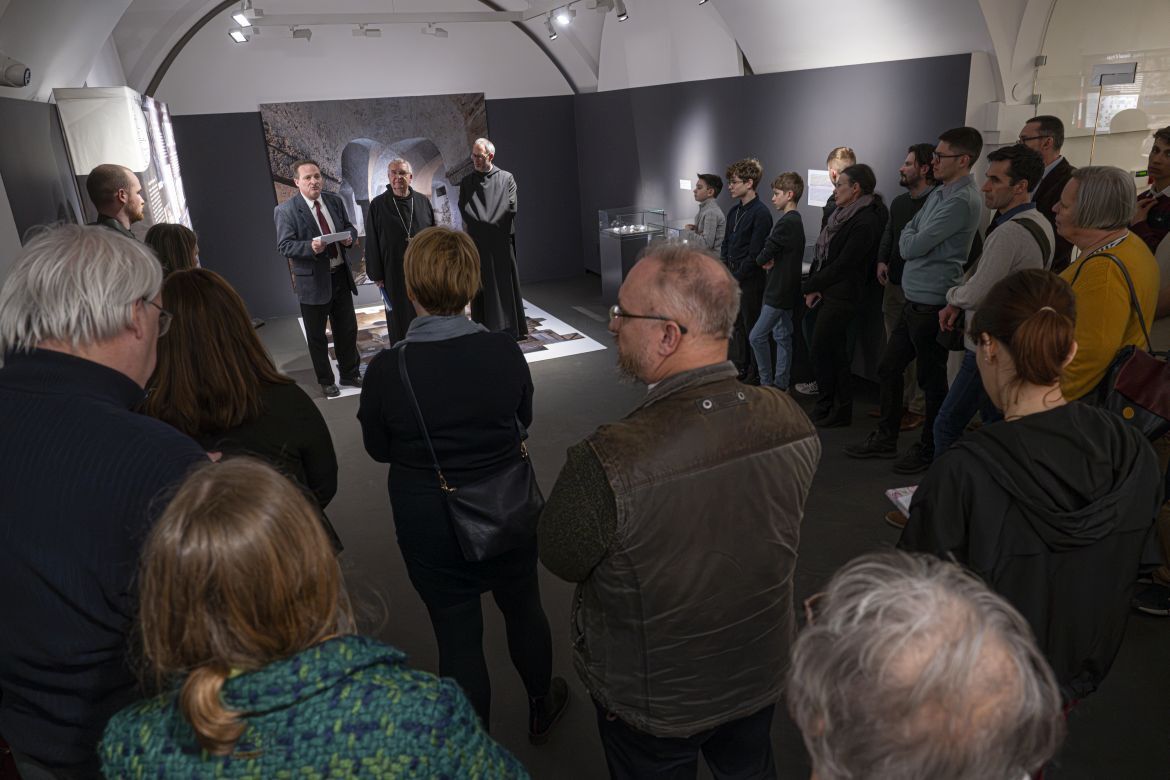 |
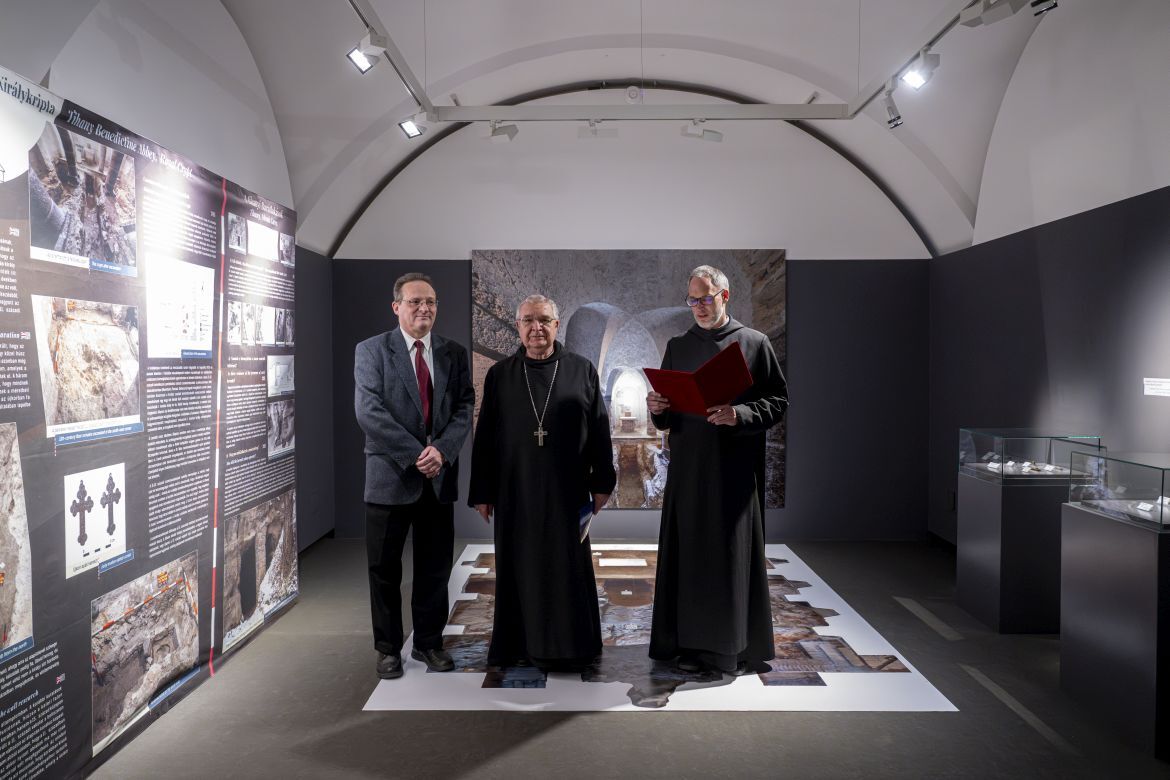 |
Photos: Archabbey of Pannonhalma / András Hajdú D.
The second phase involved archaeological excavations in the courtyard of the Bakonybél monastery, where researchers discovered the cloister and determined the layout of the early monastic buildings. Additionally, they excavated the presumed hermit cave at Bakonybél-Szentkút and conducted a Lidar survey of the Tihany Peninsula.
In the third phase, scientific analyses were conducted on the burials at the Almád nationality Benedictine monasteries, and the northern courtyard of the Pannonhalma monastery was excavated, revealing an early monastic cemetery. A significant event was the reopening of the so-called Uros grave and radiocarbon dating of the bone remains found there. Abbot Uros was a prominent figure in medieval Hungarian church history, known for the medieval renovation of the monastic church. Researchers aimed to determine whether the burial site found at the central location of the Pannonhalma church, consecrated by Uros in 1224, was indeed his final resting place. Although the radiocarbon analysis did not confirm that the remains belonged to Uros, it is likely that another significant abbot was buried in the church’s nave.
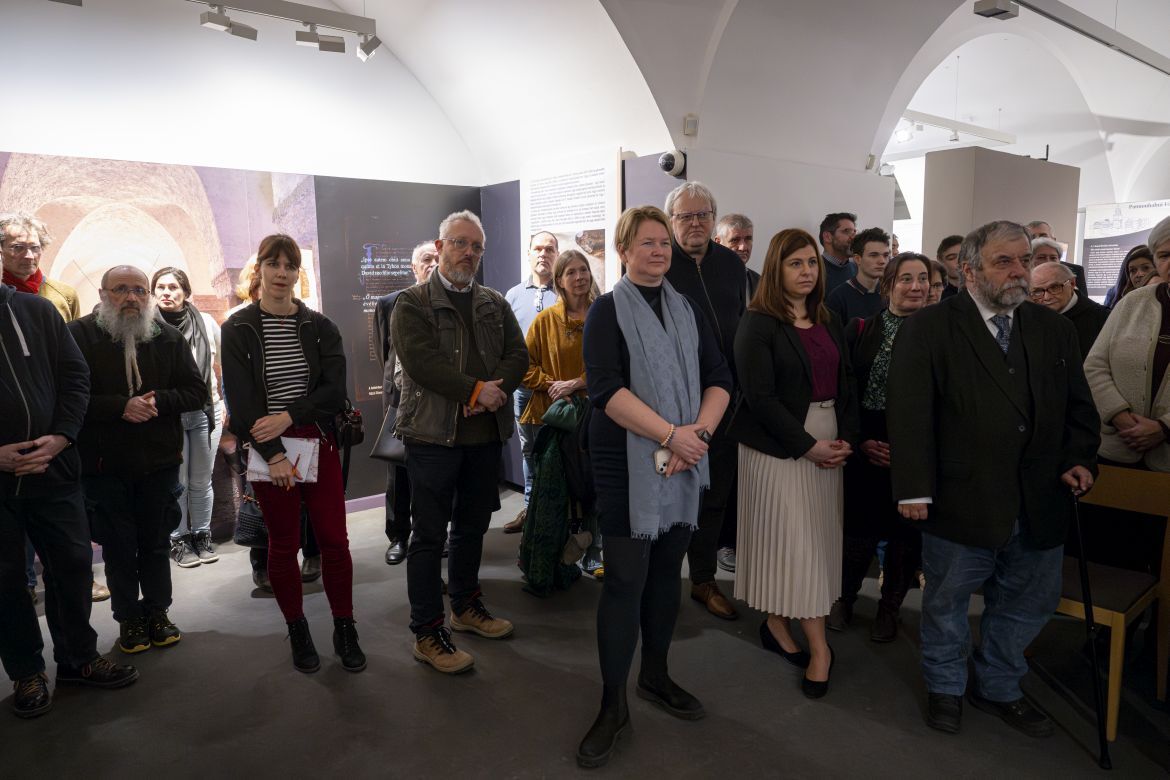 |
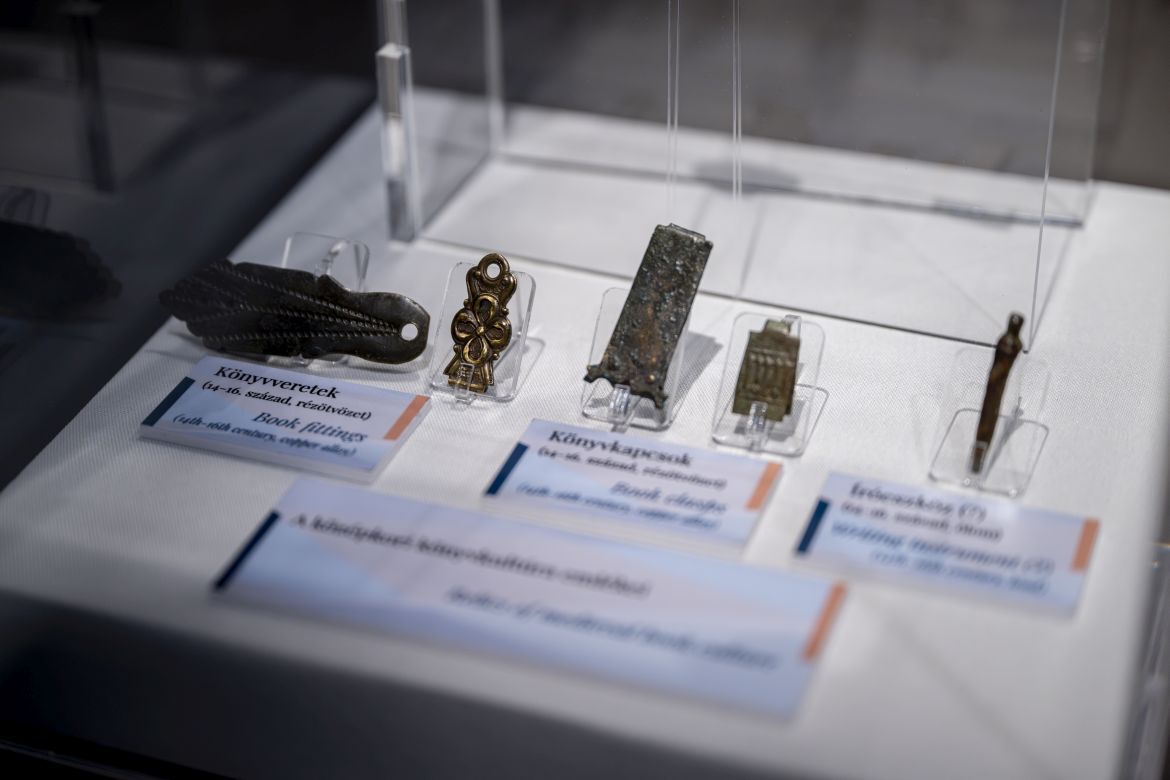 |
Photos: Archabbey of Pannonhalma / András Hajdú D.
The newly opened exhibition presents the main findings of the three-year project and showcases some of the artifacts uncovered during the archaeological research. The exhibition also includes a laboratory setup where visitors can gain insight into the latest research methods.
"For over a thousand years, Benedictine monasticism in Hungary has shaped the unity of faith, science, and culture. The early monasteries were not only centers of prayer but also hubs of education, manuscript copying, healing, and agriculture. This exhibition and the scientific work behind it demonstrate that the Benedictine heritage is not only a part of our past but also a defining foundation of our present and future," said Director General Balázs Balogh during the opening ceremony.
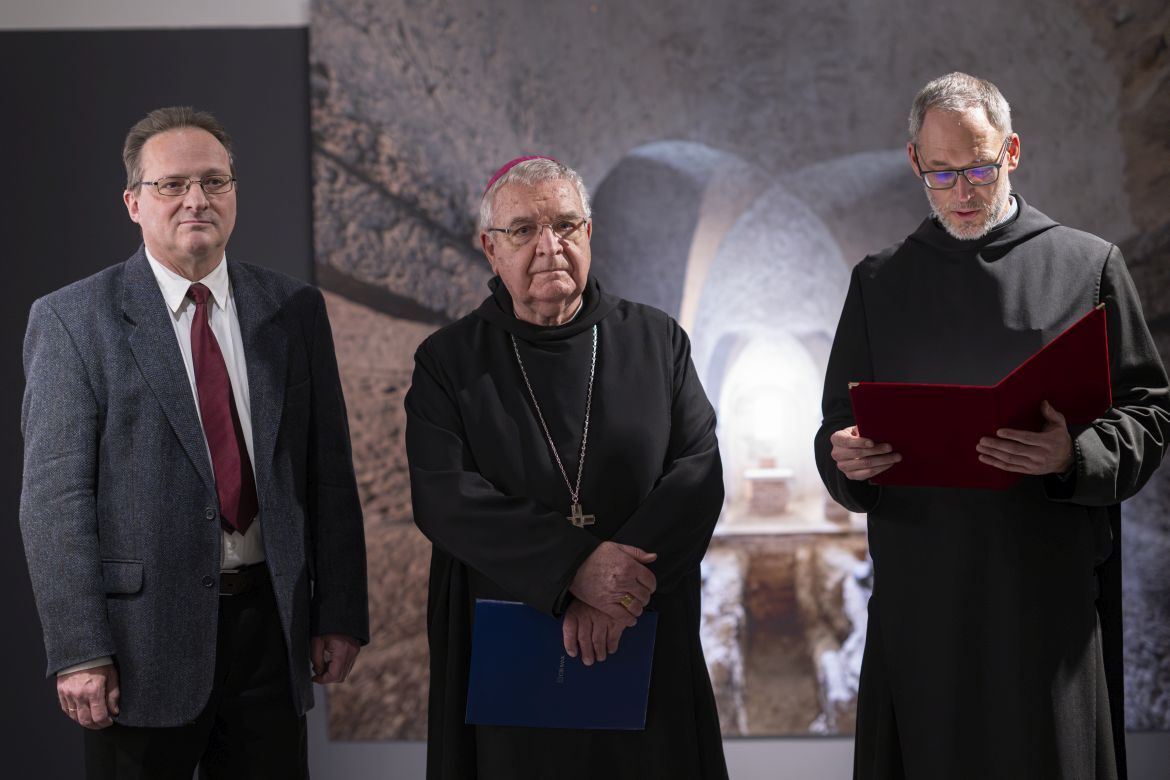 |
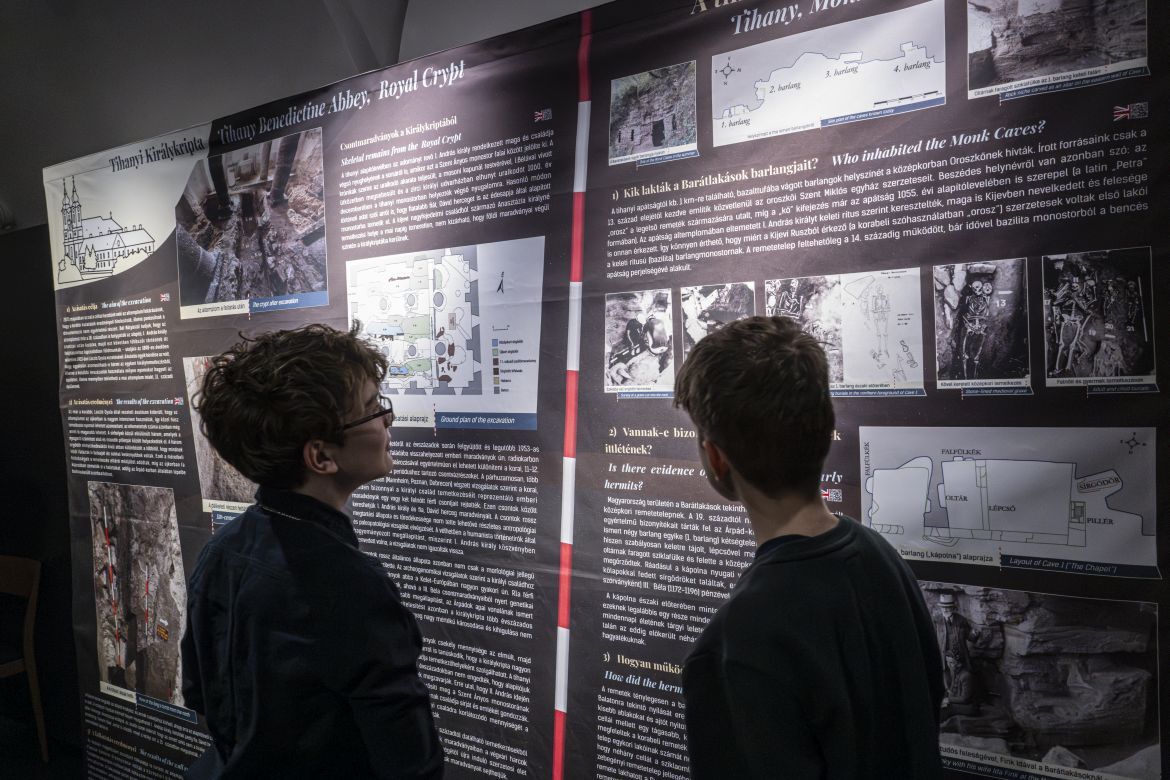 |
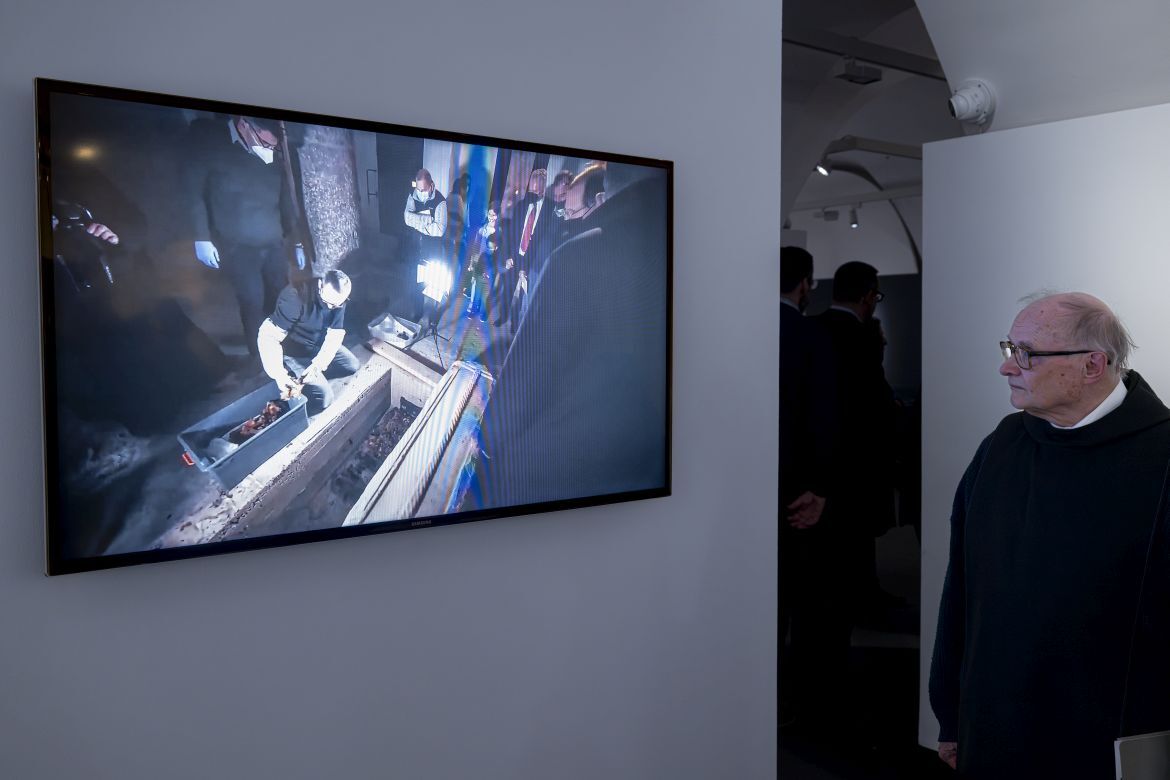 |
Photos: Archabbey of Pannonhalma / András Hajdú D.
In his welcoming speech, retired Archabbot Asztrik Várszegi quoted Péter Pázmány, Archbishop of Esztergom: "The memory of my beloved homeland's once-flourishing state has a lifting and comforting effect on me. What a beautiful and joyful sight those numerous monasteries must have been, guarding the country like well-ordered watchtowers... Now, however, since the stones of the sanctuaries have been scattered and the monasteries have crumbled into ruins, God's grace has also abandoned us."
Reflecting on Pázmány's thoughts from 1626, Father Asztrik remarked that while optimism may seem unwarranted in our time, as people today also live under the threat of war, we still believe that God's grace has not forsaken us.
"When we grieve the destruction of our former monasteries with Pázmány, it is a joy and a consolation that a new generation has come to explore and reassess these fallen ruins so that we may learn from them and hear the message of our roots more clearly."
He then expressed his gratitude to the Research Centre and the experts for allowing the public to share in the joy of rediscovery through the exhibition and the accompanying documentary film.
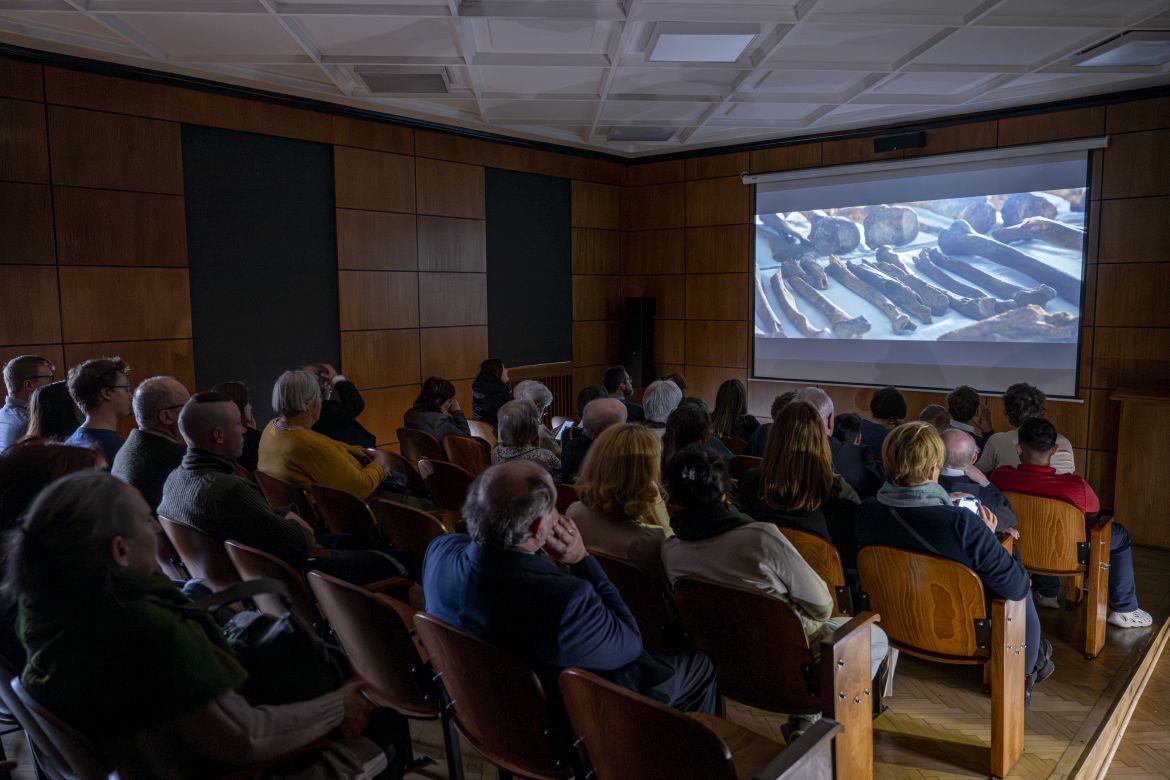 |
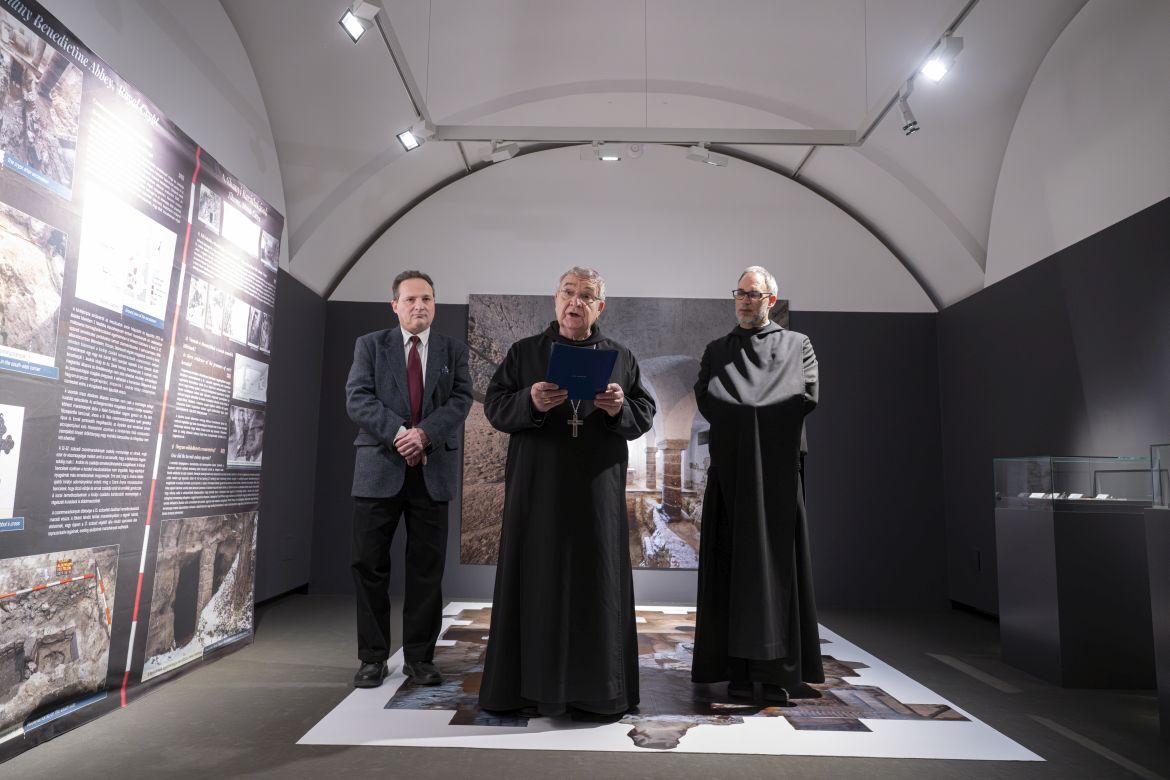 |
Photos: Archabbey of Pannonhalma / András Hajdú D.
The project leader is Kornél Szovák, while Balázs Gusztáv Mende serves as the coordinator. The exhibition is open free of charge in the Grand Monastery Exhibition Hall until April 21, 2025.

